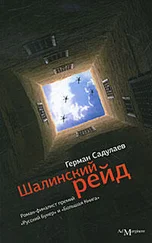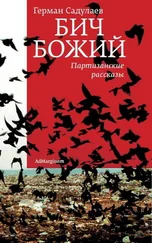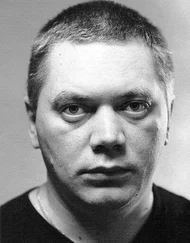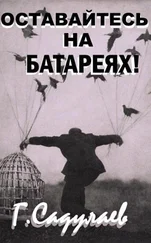Excavation of one Khazar settlement, it’s true, unearthed a stone with written inscriptions that are presumed to be Khazar. But despite all their combined efforts, historians and linguists have been unable to decipher them.
Scholars do have access to one source that is conventionally presumed to be Khazar. This is the correspondence between a Spanish Jew known as Hasdai ibn Shaprut and the Khagan Joseph. The authenticity of the correspondence has long been challenged, skeptics arguing that if there had been no letters, then the medieval Jews would have had to invent them. The same thing can be said about the very existence of the Khazar Khaganate.
The most energetic scholars of Khazar history tend to concern themselves with questions related to Judaism, being either Zionists or anti-Zionists. It’s clear why. For a people scattered across the face of the earth, the existence of an empire in which their beliefs served as the official state religion (?) was (is) of great significance. After ancient Israel and before modern-day Israel there have been only two such experiments with the Jewish nation as a state, both of them on the territory of what is now Russia: the Khazar Khaganate in the Volga delta and the Jewish Autonomous Region in the Far East, with its capital in the city of Birobidzhan.
Special mention should be made of the book by noted Hungarian and Jewish writer Arthur Koestler entitled The Thirteenth Tribe: The Khazar Empire and Its Heritage . The author had an eventful life. Here, in brief, are the highlights of his biography:
Koestler was born on September 5, 1905 in Budapest. From 1926 to 1929 he served as a Near East correspondent for a German publishing concern; he spent 1929–30 working in Paris. In 1931 he flew to the North Pole on the dirigible Graf Zeppelin . Subsequently he traveled around Central Asia, and spent a year living in the Soviet Union. At the end of his life he argued on behalf of the Exit movement, which defends the right of people to take their own lives; he put this idea into practice in London on March 1, 1983 by taking a lethal dose of a soporific (?) drug.
Arthur Koestler prefaces The Thirteenth Tribe with a quote from the Arab writer Al-Muqadassi: “In Khazaria, sheep, honey, and Jews exist in large quantities.”
The Russian translator of Koestler’s book includes the entire quotation, not without a certain ridicule: “Al-Khazar is a vast region beyond the Caspian Sea. Impassable mud, great quantities of sheep, honey, and Jews.”
One is forced to admit that, with some exceptions, very little has changed since those days. Modern akyn bard Boris Grebenshikov has a song about the modern country that occupies the territory of what used to be the Khazan Khaganate:
They make a show of pride;
They seem so debonair;
But when you look inside:
Dirt, mud, and disrepair.
The main thesis of Koestler’s book, which he argues very effectively, is that the so-called Western Jews are not even Semitic in origin; they came not from the Near East, but from Khazaria.
Studies on the history of Khazaria provide us with an entire palette of different and often contradictory conclusions. The major axes of the “Khazar polemics” in their present form are as follows:
First axis: Khazaria and Judaism. First: Were they Jewish or not? The majority of scholars agree that they were. In other words, Khazaria adopted Judaism as a state religion. Views differ, though, as to the dates, circumstances and implications of this religious reform. Authors inclining toward Zionism identify the earliest plausible date, arguing that Khazaria adopted Judaism just before it reached its peak as a state, and attributing its success directly to the conversion. Authors inclined toward anti-Semitism argue for a later date, one that immediately precedes the fall of the Khazar Empire. Naturally they consider Judaism the cause for the empire’s decline and fall.
Academic historians who are relatively unbiased concerning this question incline toward the view that only the elite converted to Judaism and that this change did not have a major influence on the lives of the masses or on the fate of the state.
Second axis: origins. Distinguished scholar A. A. Tiunyaev offers the least disputable version of the origin of the Khazars: “The Khazars, a nomadic people belonging to a so-called Turkish tribe that initially dwelled between the Caspian and Black Seas, appeared in Eastern Europe in the fourth century after the invasion of the Huns.” However, even as scholars repeat this phrase, “appeared… after,” they maintain an enigmatic silence as to its meaning. Either the Huns who settled in these parts began to be called Khazars, or some other kind of invasion took place. All scholarship on the subject retains this ambiguity: Whenever mentioning the origin of the Khazars, they resort to the phrase: “appeared… after.”
Third axis: the dispute as to heritage. If the existing scholarship is uniformly unsatisfying regarding the origin of the Khazars, there is a clear surplus of theories about the heirs to that culture’s historical glory. The abovementioned Koestler considers all European Jews, the Ashkenazi, to be descendants of the Khazars. Lev Gumilyov, after carefully studying data on the skull shapes and average height of the Terek Kazaks, identified them as heirs to the Khazar ethnicity. God Himself decreed that the Crimean Karaites would succeed the Khazars. But the Altai peoples also claim this legacy, citing common language features. The Russians, too, are in the fray: Some scholars modestly remind their readers that Slavs made up the majority of the Khaganate’s population and hence held the rightful claim to Khazaria. Others simply assert that the Khazars were in fact Russians, and that there were no Turks in sight. For my part, I’ve found quite a bit of evidence that the Khazars were Chechens.
To sum up: According to data gathered and verified by historians, the Khazar Khaganate was a state either of Turks, or Jews, or Slavs, or Caucasians, or, in general, of Swedes. The Khazars appeared from somewhere. Or they always were present, but under a different name. During the Khazar Khaganate or in the sixth, or the eighth, or eleventh century they adopted Judaism. Judaism was adopted either by a small group in the highest social elite, or by the masses; it either influenced the fate and culture of the Khaganate or did not; it either enabled its rise or hastened its collapse, or was never adopted at all. After the disappearance of the Khazar Khaganate, the heirs to its culture and traditions were either Crimean Karaites, or European Jews, or Altais, or there were no heirs whatsoever.
Thus, my research has lead me to three precise and definitive conclusions:
• The Khazar Khaganate existed in the past in some territory or other; or,
• The Khazar Khaganate existed and continues to exist, but in a different dimension, some kind of parallel reality; or,
• The Khazar Khaganate never existed anywhere. It is a model or plan, devised at some point in history, that is destined to, or simply might happen to, come into being sometime in the future.
And the time came for the great celebration of the entire Khazar people. In the bazaars entertainers played flutes and told funny stories. Sorcerers kindled fires, sending clouds of heady smoke into the sky. Colorful rags fluttered in the breeze over the rooftops, frightening the feathered creatures of the air. Crippled veterans of righteous wars were served leftover dead groundhogs for the glory of the Khagan and the Bek—let them, too, rejoice! And the Khagan’s palace filled with people; the entire Khazar elite—the beau monde —gathered there. Faces white, silks rustling, emeralds and rubies sparkling; if all the lamps in the palace had been extinguished, it would still be full of light from all the precious stones. Brilliant of mind and pure of soul! What are you next to them? The elite has gathered, the elite will feed its face. What a feast! Tables laden with victuals, fine drinks glittering in silver carafes, you could drown in them. The palace buzzed like a nest of wasps, everyone eating and drinking, drinking and eating. Now into the center of the hall strode the Great Bek. His jewel-encrusted platinum staff thundered against the floor and the sound reverberated through the great hall!
Читать дальше












